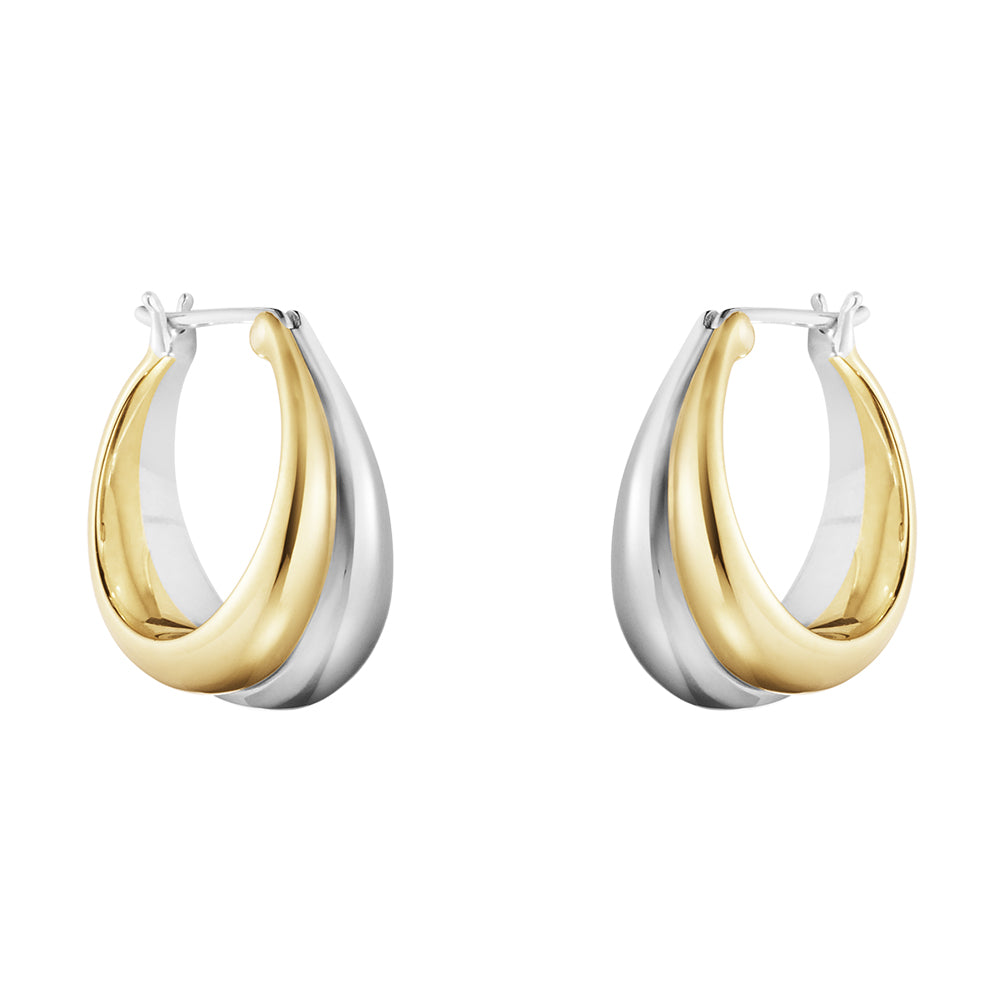
How to Tell If a Necklace Is Real Gold: Quick Guide
Introduction
The golden necklace—timeless, graceful, and steeped in history—has long held a revered place in the world of personal adornment. Worn by queens and passed through generations, gold necklaces are more than jewelry; they are heirlooms, investments, and expressions of identity. Yet, in a world flooded with imitations, discerning the authenticity of a gold necklace becomes an art, a science, and a necessity.
This guide is not merely a checklist; it is a journey into understanding what makes real gold so revered. We'll uncover not only the physical traits of genuine gold necklaces but also the emotional and symbolic weight they carry. Through careful observation, simple experiments, and expert insight, we aim to provide a beautifully structured narrative to help you identify the authenticity and value of your necklace—with elegance and confidence.

The Allure of Gold: Why Authenticity Matters
There is something undeniably enchanting about a gold necklace—the way it rests against the skin with warmth and luster, its ability to catch the light in a dance of subtle brilliance. Real gold carries with it not just aesthetic beauty, but also permanence. Unlike costume jewelry that tarnishes and fades, authentic gold endures. Its value doesn’t merely lie in price, but in heritage, in symbolism, and in its ability to retain or even appreciate in worth over time.
Gold necklaces have been symbols of wealth, power, and beauty across many cultures. From ancient Egypt, where they were associated with divine protection, to the Roman Empire, where gold was considered a currency of immortality, gold has transcended the realm of material wealth. Today, a gold necklace, whether given as a gift or worn as a personal adornment, continues to signify lasting beauty and value.
As gold jewelry grows more popular in fashion and gifting culture, counterfeit pieces have become increasingly sophisticated. That makes the ability to distinguish real gold not just a technical skill, but a way to protect sentiment, investment, and style. In a market where imitation can appear strikingly similar to authenticity, it becomes imperative to understand the deeper significance of genuine gold.

The Substance of Truth: Gold's Unique Properties
Gold, in its purest form (24 karats), is soft yet unmistakably dense. When alloyed with other metals to create 10K, 14K, 18K, or 22K variations, it gains durability without losing its signature warmth. These variations influence both appearance and value.
One of the first clues lies in the weight. Hold the necklace in your palm: does it feel reassuringly heavy for its size? Real gold, especially in necklace form, carries a substantial weight—often more than meets the eye. A higher karat gold piece will usually feel denser and more luxurious, while gold alloys (such as 14K or 18K) tend to be a bit lighter, but still noticeably heavier than their imitation counterparts.
The second clue is in the hue. Pure gold is a rich, buttery yellow. Lower-karat necklaces, blended with silver or copper, may shift slightly in tone. Still, authentic gold retains a certain visual depth—a glow rather than a shine. The gleam of real gold has a reflective, almost ethereal quality that imitators can struggle to replicate. In the world of fine jewelry, this lustrous glow is the hallmark of authenticity.
But gold is more than just a physical substance—its allure lies in its ability to hold significance across cultures and generations. Whether it's passed down as a family heirloom, worn to mark a special occasion, or bought as a timeless investment, gold jewelry carries with it a weight of meaning that transcends its mere material value.Relax Feel Fashion’s necklaces embody this very essence—blending lasting beauty with deep cultural and emotional significance.

Inscriptions and Indications: The Language of Hallmarks
Genuine gold necklaces often speak through subtle engravings. Look for small, cleanly stamped hallmarks—perhaps hidden on the clasp or underside of a pendant. Common indicators include:
· "14K," "18K," or similar karat numbers
· "585," "750," or "916"—European markers for purity levels
· Avoid stamps like "GP," "GEP," or "HGP," which signify gold-plated variants
 Hallmarks serve as the jewelry industry’s seal of quality, ensuring the gold meets specific standards. These stamps offer an instant verification that helps distinguish gold from mere gold-plated alloys. However, not all authentic gold pieces will necessarily be stamped, especially those that are antique or handmade. In such cases, the absence of a hallmark does not imply a lack of authenticity.
Hallmarks serve as the jewelry industry’s seal of quality, ensuring the gold meets specific standards. These stamps offer an instant verification that helps distinguish gold from mere gold-plated alloys. However, not all authentic gold pieces will necessarily be stamped, especially those that are antique or handmade. In such cases, the absence of a hallmark does not imply a lack of authenticity.
For vintage or heirloom pieces, verification may require an appraisal from a professional jeweler who can examine the material's integrity. In some cultures, gold jewelry may also carry additional symbolic marks or designs, further deepening its cultural and emotional value.

The Gentle Experiment: Home Methods to Explore Authenticity
When delicacy meets curiosity, a few home-based methods can help verify your necklace’s gold content.
1. The Magnet Test
Gold is not magnetic. A gentle pass with a strong magnet—ideally a neodymium magnet—can offer insights. If the necklace jumps toward the magnet, it likely contains base metals. Still, a lack of magnetic reaction does not confirm authenticity. Some alloys used in jewelry-making, like copper or silver, are non-magnetic as well.
2. The Vinegar Test
Place a few drops of white vinegar on an inconspicuous part of the necklace. Real gold remains unaffected, while fakes may change color. Wipe clean with a soft cloth afterward to preserve the piece’s finish. This is one of the simplest methods for testing gold, though it may not be suitable for intricate or delicately finished pieces.
3. The Ceramic Test
With great caution, rub the necklace on an unglazed ceramic surface. A real gold streak appears golden, while fake metals may leave a dark mark. Use this method sparingly, as it may scratch delicate surfaces. The ceramic test, while simple, offers a quick visual indicator of authenticity, but it does come with the risk of scratching your jewelry.
4. The Skin Test
Wear the necklace against bare skin for a day. If your skin turns green or black, the necklace is likely not solid gold. However, this test can be influenced by skin chemistry and sweat, and is not fully reliable. Authentic gold is hypoallergenic, meaning it doesn't usually react with skin, making it an excellent choice for those with sensitive skin.

The Science of Certainty: Advanced and Professional Methods
When elegance meets precision, science offers several reliable ways to determine a necklace’s authenticity.
The Nitric Acid Test
A small scratch on a testing stone, followed by a drop of nitric acid, reveals much. Authentic gold remains inert, while other metals react dramatically. However, this method should only be performed with proper safety equipment or by a jeweler. Nitric acid, although highly effective, should be handled carefully due to its corrosive nature.
Electronic Testing
Professional jewelers often use devices that read electrical conductivity to determine gold purity without harming the item. The process is quick, reliable, and elegant in its modernity. These devices offer a non-invasive, efficient way to verify gold purity, providing an instant result with minimal risk to the jewelry itself.
Specific Gravity Method
For those with scientific leanings, the specific gravity of gold (~19.3 g/cm³) offers a near-definitive indicator. Using a precise scale and water displacement, you can calculate this—but the process requires meticulous care. This method is considered one of the most accurate ways to measure gold’s density, though it requires some level of technical expertise to perform correctly.
The Professional Appraisal
When stakes are high—whether emotional or financial—nothing replaces a professional jeweler’s assessment. With experience, tools, and calibrated instruments, they can offer you not only verification but insight. An appraisal can even serve for insurance or resale purposes, ensuring your gold necklace retains its value over time. Appraisals are typically performed by certified gemologists, who can assess the necklace’s purity, weight, and overall quality.

Conclusion:The Quiet Power of Authenticity
A real gold necklace is not simply a chain—it is a declaration. It whispers of elegance, of lasting value, of stories passed through generations. In a world where so much is fleeting, authenticity holds profound appeal.
By understanding the signs, using thoughtful methods, and consulting trusted professionals, you can ensure that your necklace is more than a beautiful illusion. You honor not just the metal, but the memory, the meaning, and the craftsmanship it represents.Choosing a necklace from a brand like Relax Feel Fashion means you're wearing not just beauty, but a symbol of authenticity and heritage.

FAQ
1.How can I tell if my necklace is made of real gold?
To determine if your necklace is real gold, you can look for hallmarks or stamps indicating the karat level, such as "14K," "18K," or "24K." Additionally, you can use methods like the magnet test, vinegar test, ceramic test, or even visit a professional jeweler for an appraisal. These methods help confirm whether your necklace is solid gold or an imitation.
2. What are the hallmarks or stamps to look for?
Hallmarks are small engravings typically found on the clasp or underside of the necklace. Authentic gold pieces are often stamped with purity marks such as "14K," "18K," "22K," or European marks like "585," "750," or "916." Avoid stamps like "GP" (gold-plated), "GEP" (gold electroplated), or "HGP" (heavy gold plate), as these indicate gold-plated jewelry, not solid gold.
3. Can my necklace still be real gold without a hallmark?
While hallmarks are a strong indication of authenticity, some older, handmade, or vintage pieces may not be stamped. In such cases, it’s best to consult a professional jeweler or gemologist for an appraisal. Hallmarks are not always a guarantee, but they remain one of the most reliable indicators of gold purity.
4. Should I get my gold necklace appraised?
If you have doubts about the authenticity of your gold necklace or if it has significant sentimental or financial value, it’s a good idea to have it appraised by a professional jeweler. They can accurately assess the gold's purity, weight, and overall quality, offering you a certified appraisal for insurance or resale purposes.
5. Can a professional jeweler help me identify fake gold?
Yes, a professional jeweler can use specialized tools and techniques to accurately identify whether your necklace is real gold. They have the expertise to spot fake gold and can offer a written appraisal to confirm the authenticity of the piece.

Call To Action
Whether you're adorning yourself or offering a heartfelt gift, let your choice reflect not just beauty but truth. Real gold is an investment in quality, emotion, and enduring grace.Our product is a good choice. If you already own a gold necklace, treasure it. If you’re seeking one, make your search a mindful one. Trust in elegance, choose authenticity, and wear your neckace not just as an accessory—but as a legacy.








